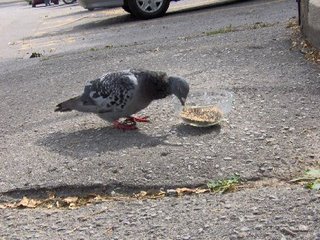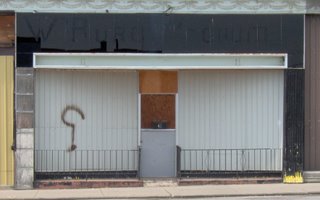I took this photo late last month when we visited some friends of mine from back home. They knew I had a recently found afinity for trees, and told me they knew of a tree much older than most. Sure enough, when we arrived, just as the sun was setting, there it was. As you can see by the sign, it had been labelled to mark some symbollic occasion in 1980, when I assume a core sample indicated it was 350 years old. Of course the Original Forest that marked the location had been removed to allow for the CSX rail tracks and an industrial complex that looks like it had been empty since shortly after the occasion marking the tree's 350th birthday.
I had thought about posting an image of the tree, but held back for the sole reason that the mind can probably well imagine what a now 376 year old Oak Tree from the Original Forest looks like. But then again, maybe not. There were some interesting characteristics about this tree that might escape the imagination, and this is good, because it has to be seen to understood. These characteristics have appeared in every single post I've made up to this point, they are divisions between industry and the land and between the sky and the earth.
It has been some time since I posted, and since my last post I knew the Oak Tree from the Original Forest had to be the next subject. It was just lacking context. I thought about some rubbish about frames, how we look at the world, blah, blah, blah, but every idea seemed to be just a little self important, until now.
Yesterday I was looking on the internet, and wanted to find the different names for a particular Norse Goddess. I guess my first mistake was thinking the internet might offer some assistance. Without getting too much into a review of the website I found from wikipedia (maybe this was my problem), the page appeared rather sophisticated, with plenty of flash, celtic knotwork and a depth of knowledge not often found on the net. Being a little curious, I decided to look further into the page to see what the host thought of other matters dealing with culture, religion, politics, etc... all important precursors to one's beliefs. Well, one thing I've learned is it never takes too long for racists to reveal their hand, they must horrible at poker. The host offered all sorts of veiled attacks toward many non-white people, rap music, and anything that was out of the realm of strict Eurocentric ethnicity.
This made reading the site much easier. I had been hesitant to give the author the benefit of the doubt to begin with, mainly because Nazism had a foundational history that was falsely based on Nordic tradition. However, when the great ancestral storytellers were spinning their yarns, I think it would be a great insult to them if one were to say their stories were based on the eugenic identity of their culture. Since when was culture based on eugenics? I think the answer to this goes straight to 19th century Imperial ideas of commerce and empire building that justified the suppression of Indigenous peoples from the Great Horn of Africa to the Great Wall of China. Viewing tradition from that perspective is the great colonial hangover.
What then is traditional knowledge, and what are the gifts offered to us from the ancestral storytellers who mapped the cosmos just as they mapped the human experience? Considering I sit in front of a computer, I am one of the great deconstructers of ideas, a way of life that has its own problems, but reading my last post I think its quite appropriate to say I tired of always digging. However, I did see the Oak Tree from the Original Forest, and it was equally quite a sight and site to take in. I think, then, that tradition is that Oak, but what you see in the photo above is all we really know of it: a blurred descriptive monument that says more about us than it says about the tree, leaving only a faint hint of the actualy tree, all 376 years of it, in the very corner.



